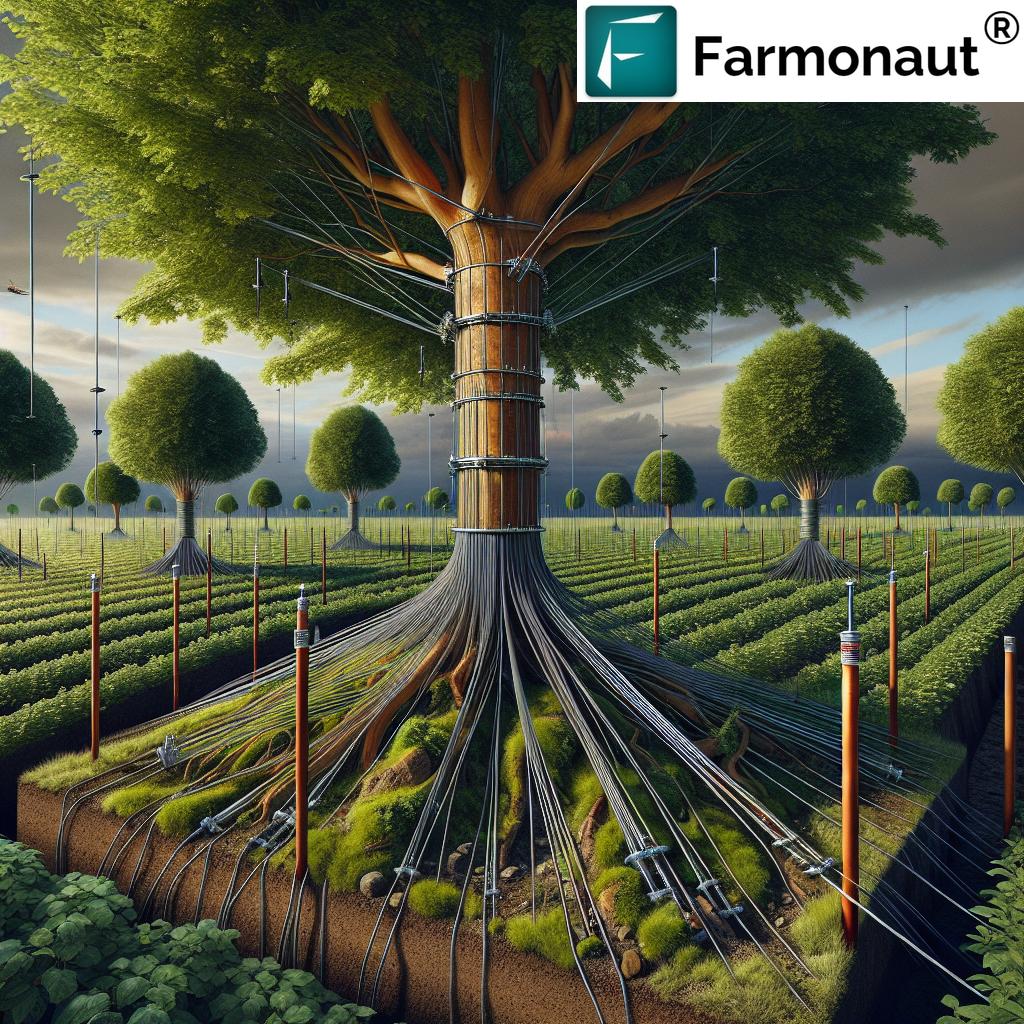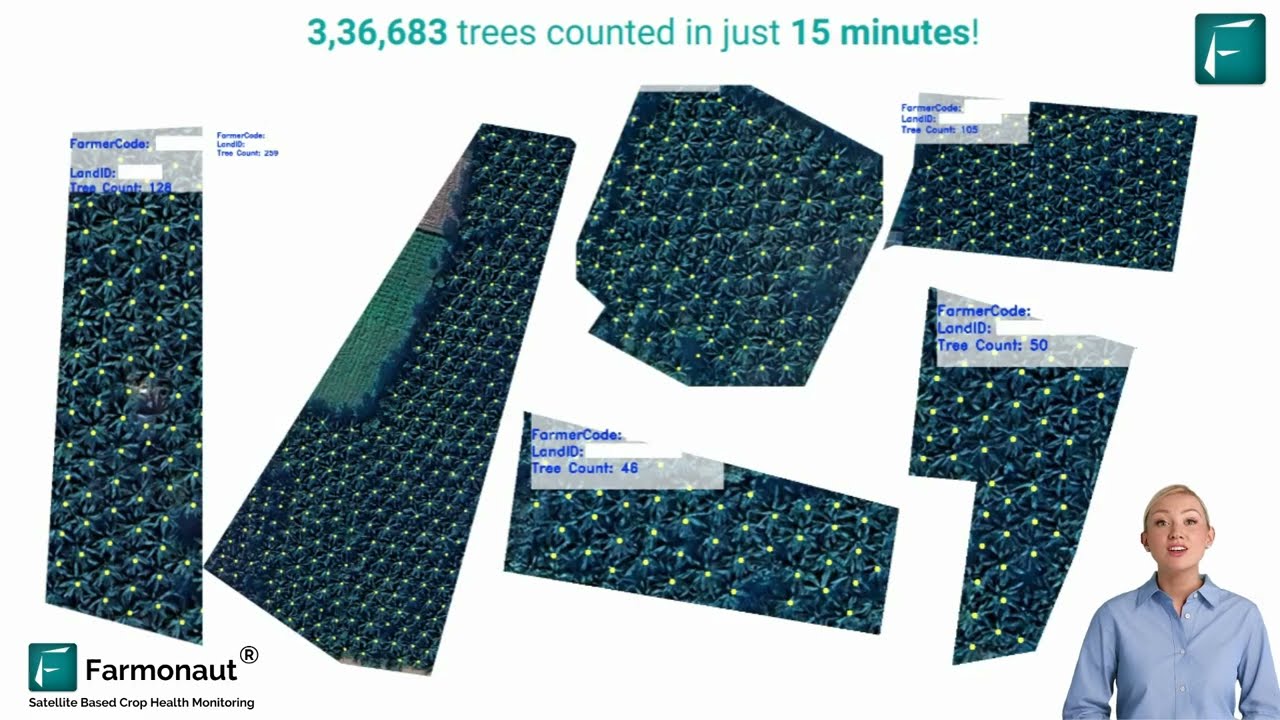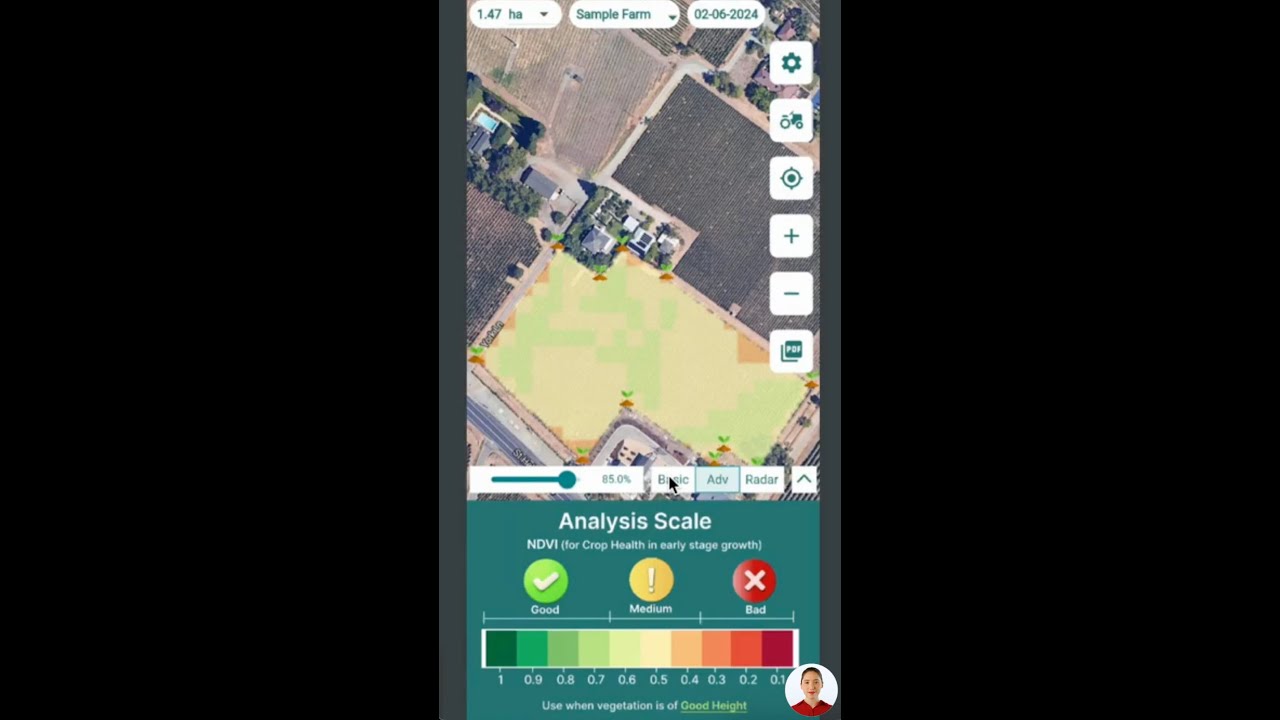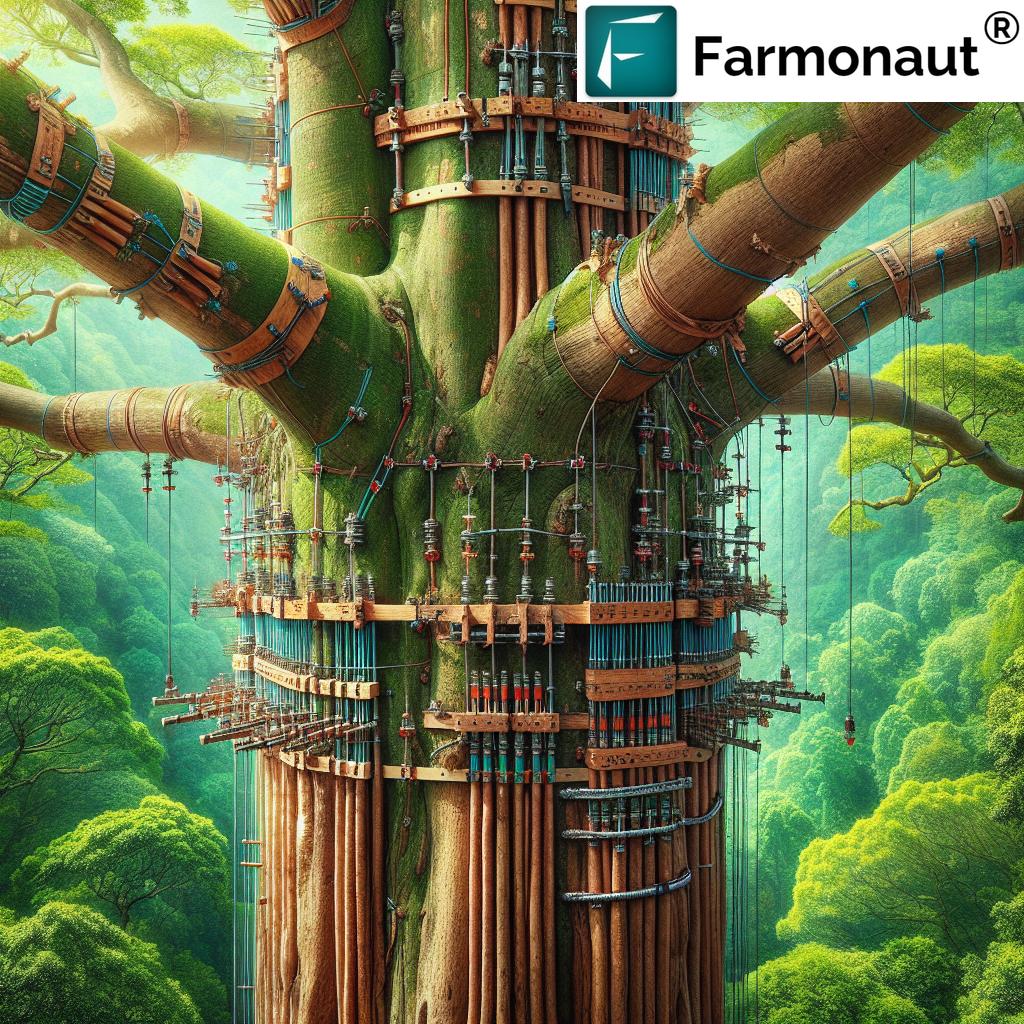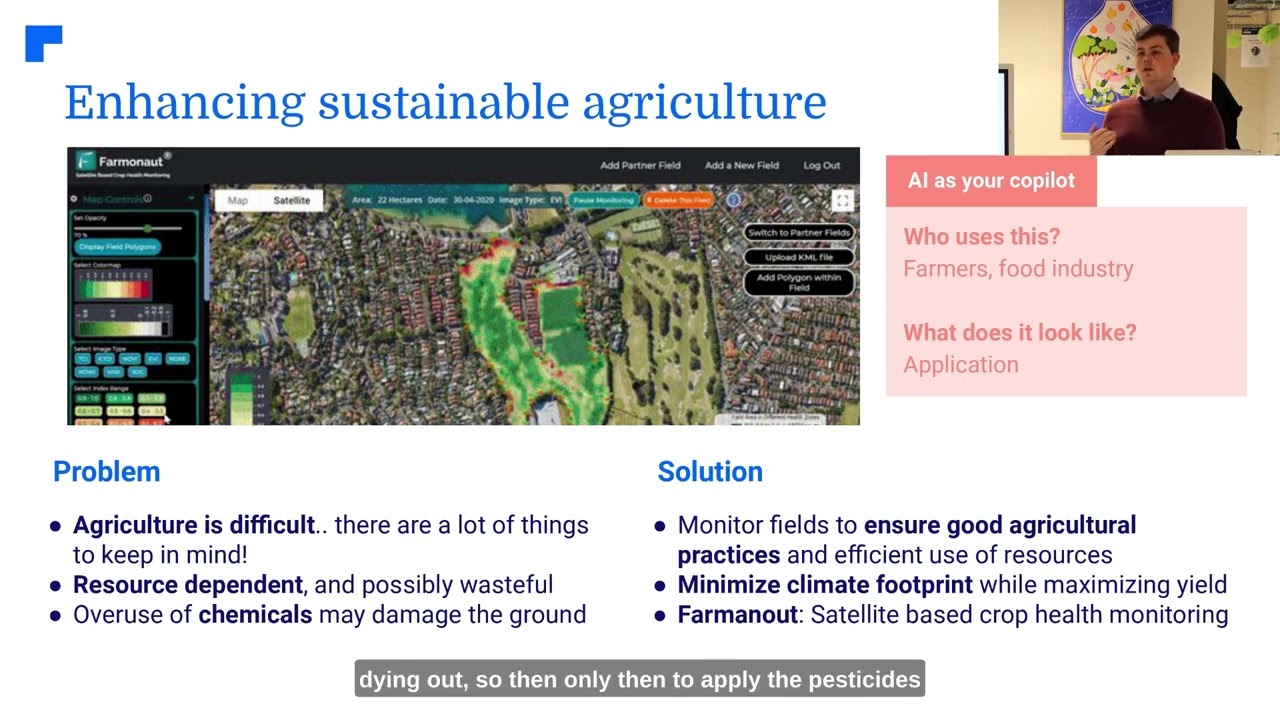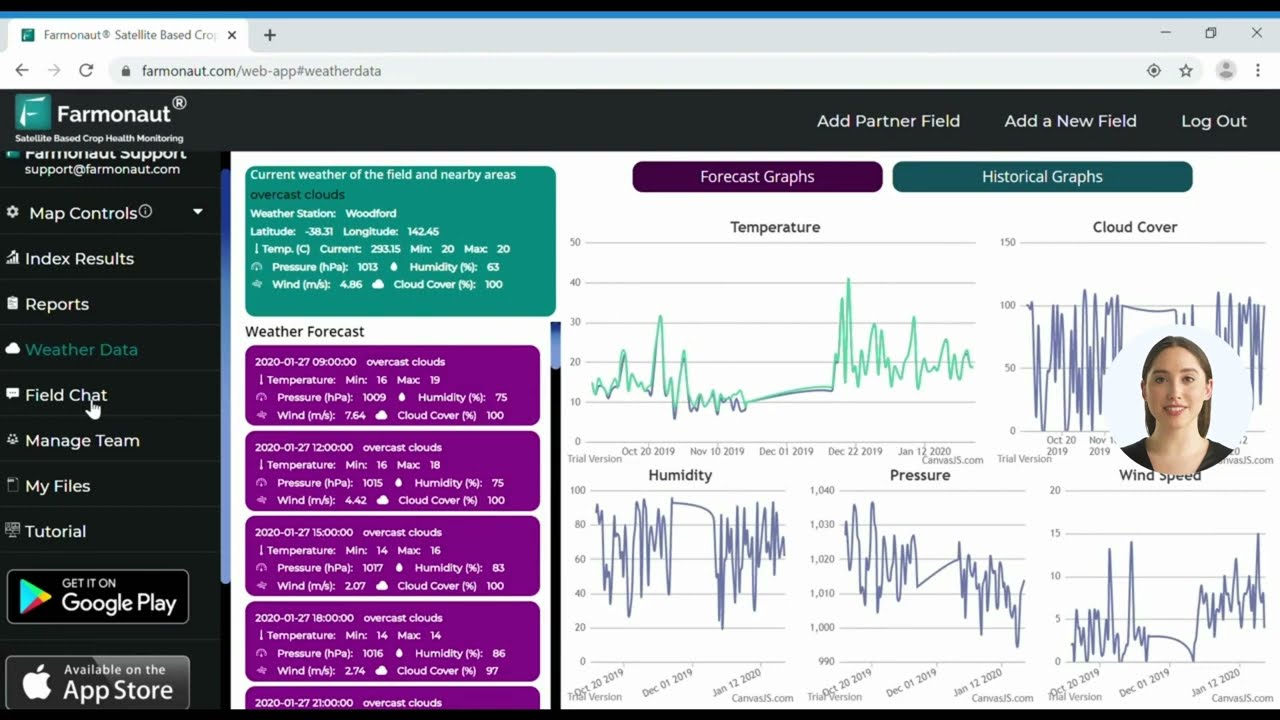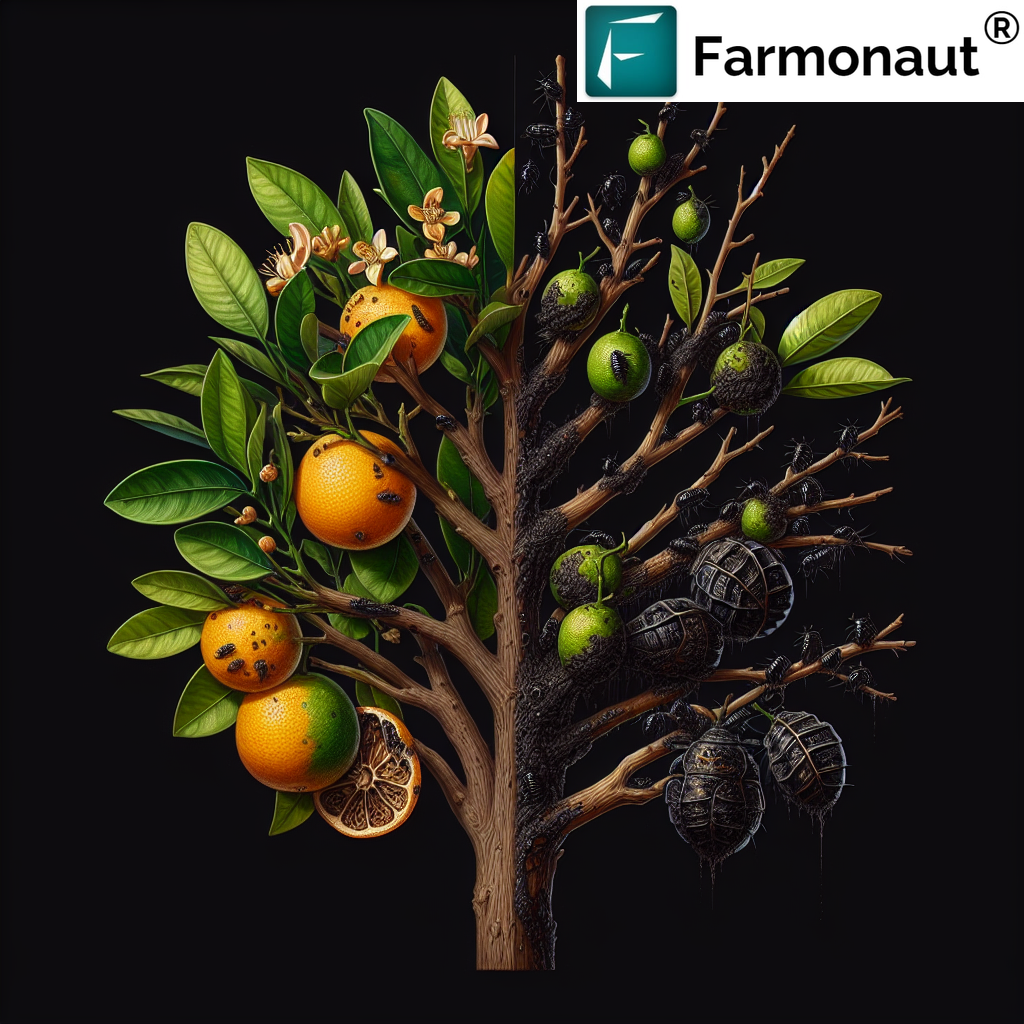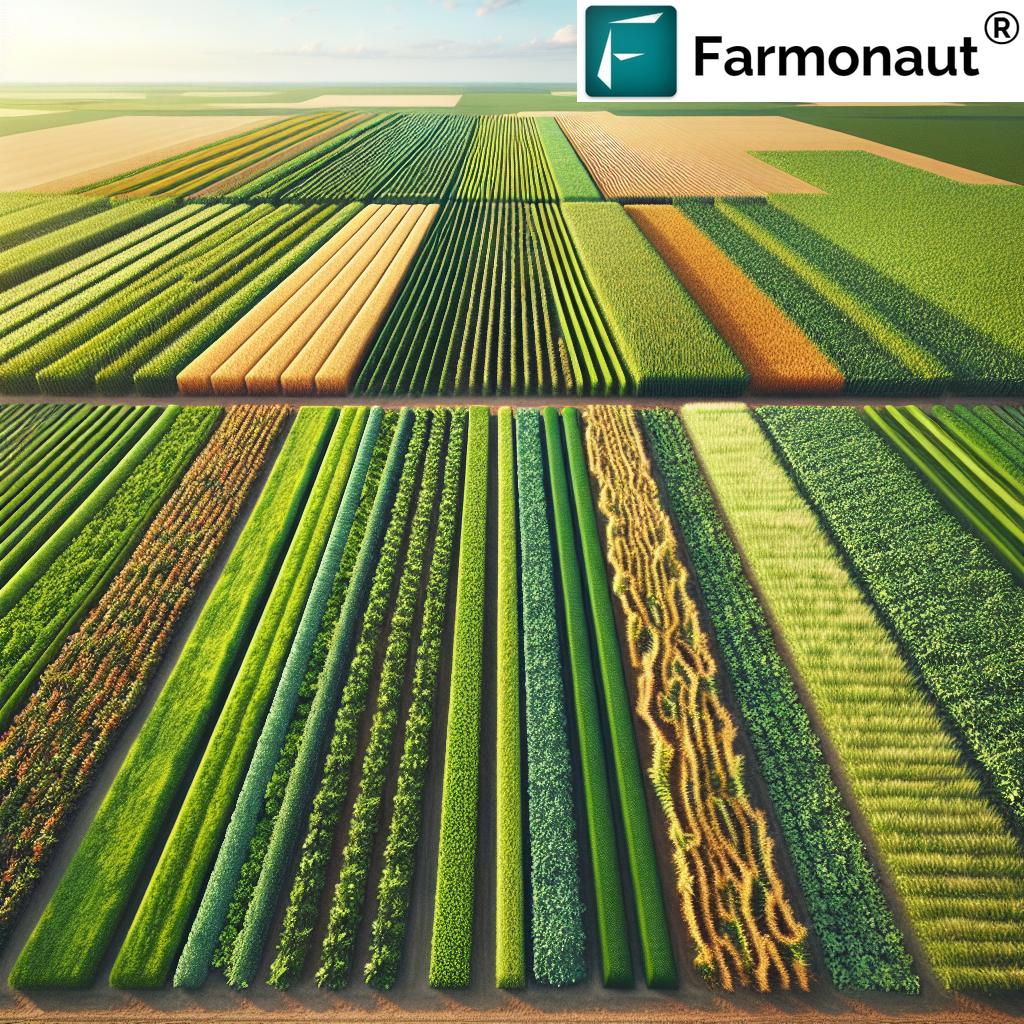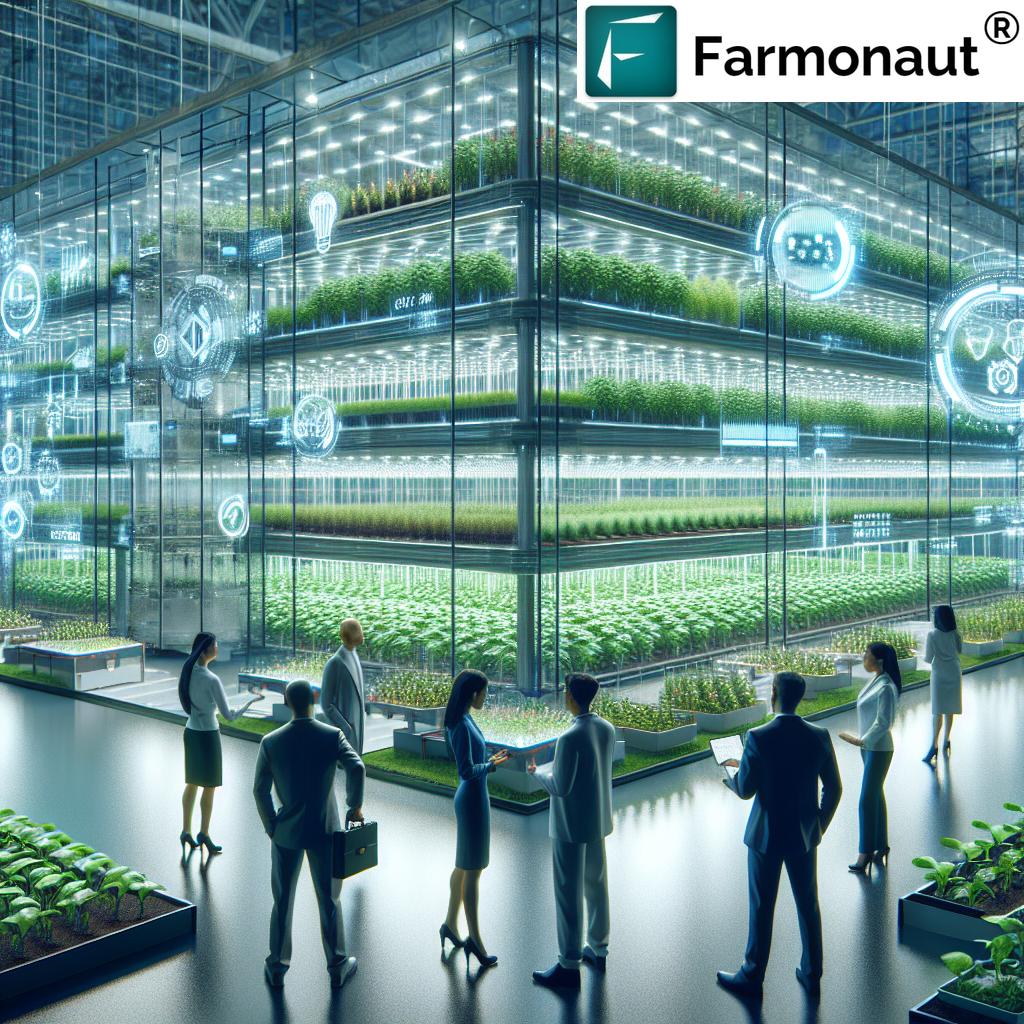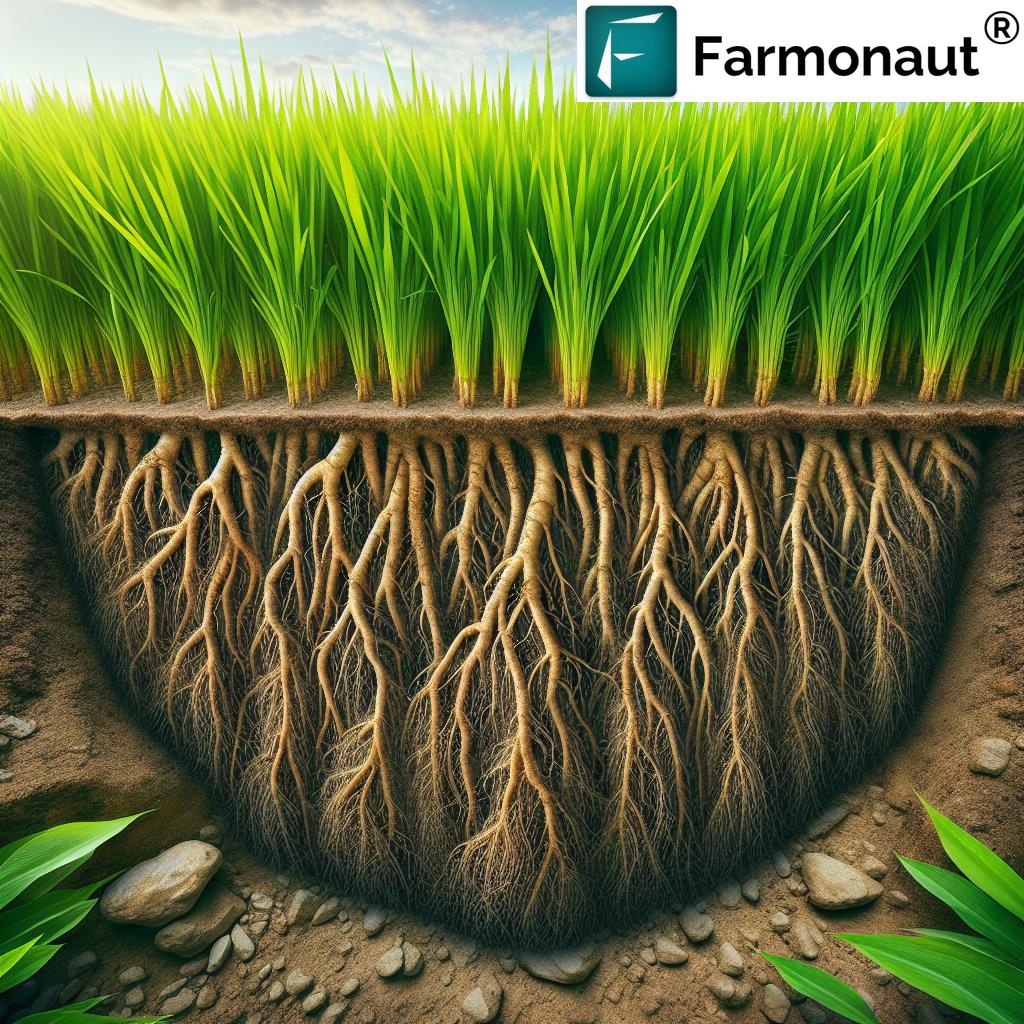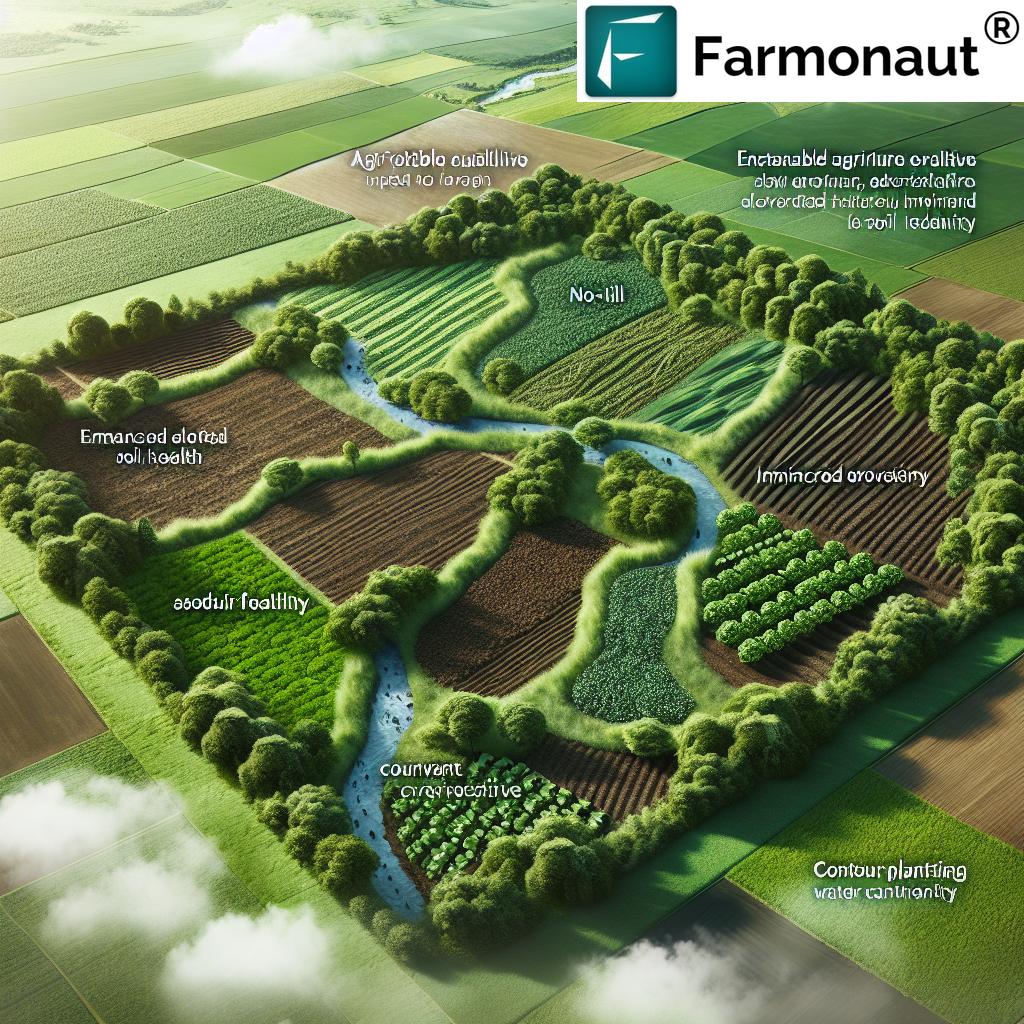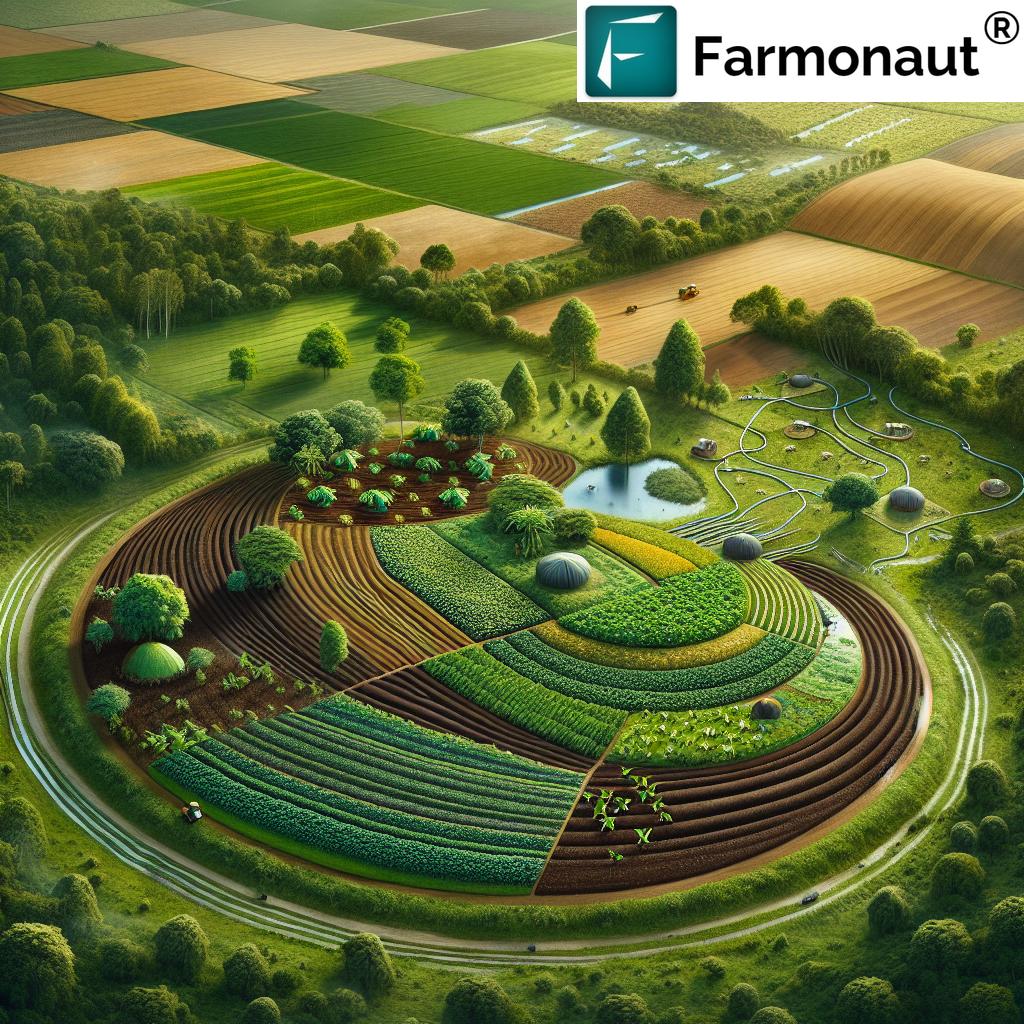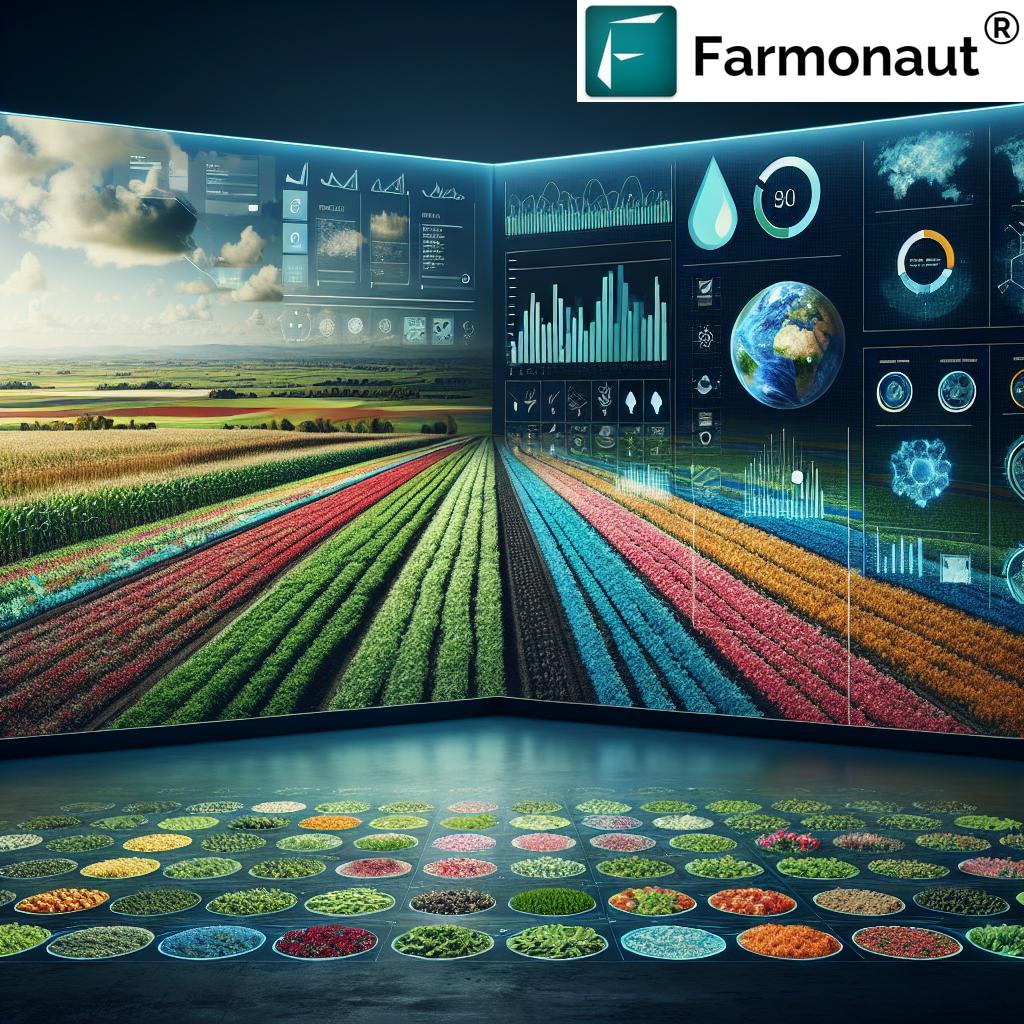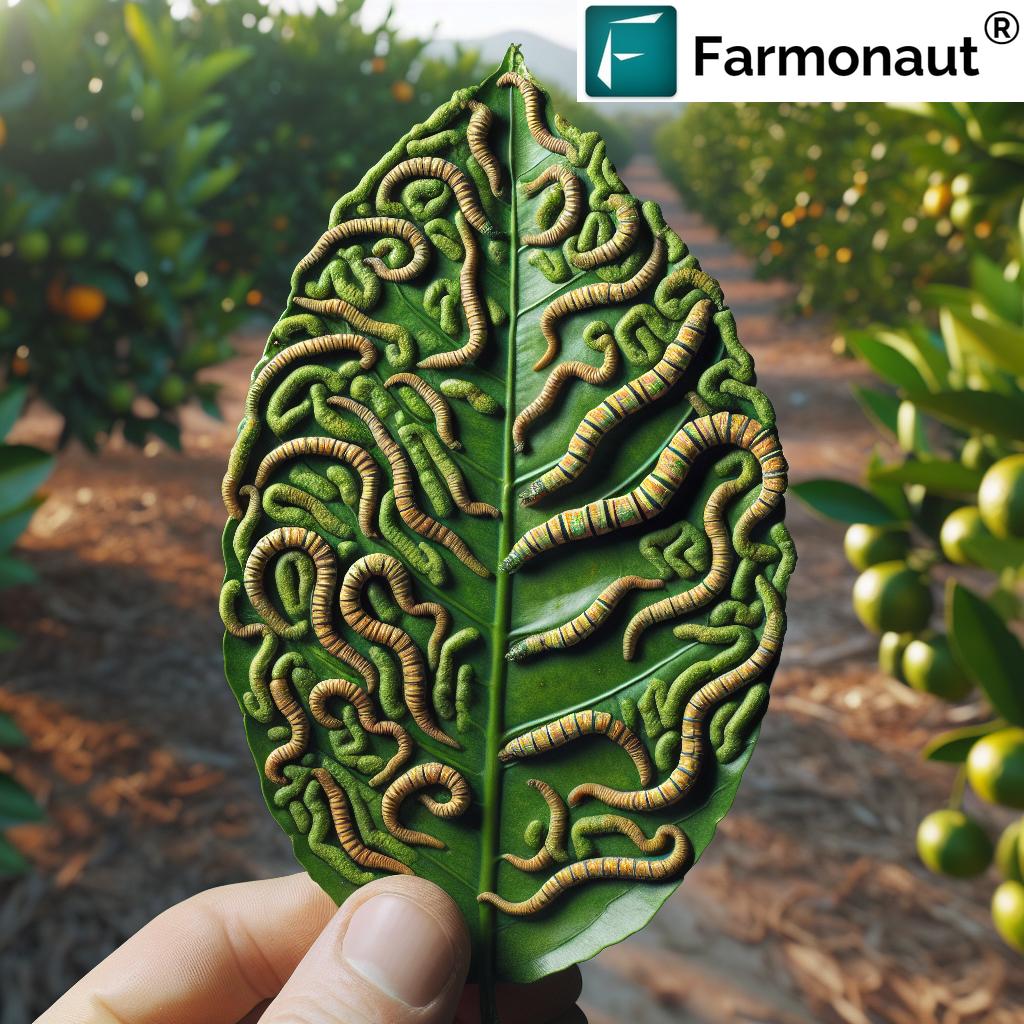Tree Storm Support System: 7 Secrets for Strong Trees
- Introduction: Why Tree Storm Support Systems Matter
- Understanding Tree Storm Support Systems
- Secret 1: Cabling and Bracing
- Secret 2: Anchoring Systems for Trees
- Secret 3: Tree Lightning Protection Systems
- Secret 4: Dynamic Cabling Systems
- Secret 5: Rod Bracing Solutions
- Secret 6: Selecting the Right Support System
- Secret 7: Tree Maintenance and Inspection
- Comparative Feature Table
- Integrating Tree Support Systems into Agroforestry
- Leveraging Farmonaut for Sustainable Tree Health & Monitoring
- Farmonaut App, Subscription & API Access
- FAQ: Tree Storm Support Systems
- Conclusion
Introduction: Why Tree Storm Support Systems Matter
In agriculture, farming, and forestry, trees are nothing short of vital. They boost biodiversity, fuel economic activities, maintain ecological balance, and are key to the health of agricultural landscapes. However, these living assets face constant threats from nature’s most destructive forces—storms, winds, and heavy rain. The damage caused by such events can devastate entire farms, forests, and agroforestry systems, disrupting productivity and economic stability.
One solution stands out for protecting trees from storm damage: Tree Storm Support Systems. Whether in commercial forestry, fruit orchards, community parks, or urban green belts, implementing the right tree support techniques such as cabling, bracing, and anchoring systems is crucial for enhancing resilience, maintaining structural integrity, and sustaining tree health for years to come.
In this post, we explore the seven secrets of strong, storm-resilient trees, uncovering proven methods and actionable strategies for effective tree protection. By adopting these solutions, we not only mitigate risk and address weaknesses, but also invest in the sustainability of our agricultural and agroforestry assets.
Understanding Tree Storm Support Systems
Before diving into actionable secrets and systems, let’s define what Tree Storm Support Systems are:
- Tree storm support systems are engineered solutions designed to bolster tree structural integrity— particularly against violent weather events.
- These systems address structural weaknesses such as weak crotches, multiple leaders, split trunks, and poor rooting in challenging or eroding soils.
- Each support method (cabling, bracing, anchoring, lightning protection, and advanced dynamic cabling) targets specific challenges and tree characteristics.
- Proper installation, periodic inspection, and regular maintenance are crucial for sustained effectiveness and the overall long-term health of trees.
Let’s explore each system in detail, as well as their roles in reducing storm risk, enhancing resilience, and maximizing the productivity and life of every tree on your land.
Secret 1: Cabling and Bracing—The Foundation of Tree Storm Support
Among all tree support techniques, cabling and bracing are the most commonly installed solutions for preventing breakage and storm damage. These methods limit movement, stabilize weak structures, and efficiently distribute load throughout the branches and stems.
Cabling Explained
Tree cabling involves installing steel cables between branches or along multiple leaders. The primary goal is to keep dangerous movement in check, especially in trees with weak crotches or those susceptible to splitting.
By connecting high-risk limbs and stems, cabling reduces the chance of catastrophic breakage during high winds or heavy rain.
- Material: High-tensile steel cables (galvanized for longer lifespan).
- Installation: Cables are anchored to secure limbs using bolts or lag hooks, then tensioned evenly.
- Best For: Large mature trees, multi-leader species, or historic specimens with weak attachment points.
Bracing Explained
Tree bracing employs steel rods (called braces or rods) that pass through split trunks or major limbs. Unlike cables that work externally, rods provide internal structural support and are essential when a trunk is already split or severely weakened.
- Material: Threaded steel rods or bracing rods.
- Installation: Rods are drilled through weak or split junctions, then securely bolted at both ends.
- Best For: Trees with a history of splitting, major mechanical injuries, or where cabling alone is insufficient.
By using a combination of cabling and bracing, we can give our trees the ability to withstand wind pressure and prevent critical damage—a crucial step in storm damage prevention for trees.
Secret 2: Anchoring Systems for Trees—Securing Roots & Preventing Uprooting
No discussion on tree storm support systems is complete without anchoring. Anchoring systems for trees are crucial, particularly for saplings, newly transplanted specimens, or trees growing on unstable soil (near slopes, eroded land, or water bodies).
- Technique: Heavy-duty anchors or posts are driven deep into the ground, positioned evenly around the base.
- Cables or straps (usually synthetic for flexibility and rot-resistance) are attached from anchor points to the tree, providing lateral stability and reducing the risk of toppling.
- Use Cases: Young trees, shallow-rooted varieties, recently transplanted trees, or trees in flood-prone agricultural settings.
Proper installation requires careful tensioning: straps should be tight but allow for natural movement, giving trees the health-boosting response to wind while preventing uprooting.
- Fact: A single well-anchored tree can withstand lateral force of wind gusts up to 90 km/h—an essential component for reducing damage in forestry and industrial plantations.
By combining anchoring systems with cabling and bracing, we set the foundation for storm-resilient agroforestry—essential for productivity, profitability, and sustainability.
Secret 3: Tree Lightning Protection Systems—Guarding Trees Against Nature’s Fury
While wind is the most common cause of tree damage during storms, lightning strikes are also a significant risk—especially for isolated or tall trees in open landscapes. Tree lightning protection systems are designed to intercept and safely channel electrical energy away from tree tissue into the ground.
- Components: Copper or aluminum conductors are run from the top of the trunk down to a deeply-embedded ground rod.
- Conductors must be properly sized (based on tree size and local lightning intensity), securely attached, and always grounded for safety.
- Use Cases: Heritage trees, valuable timber, orchard leaders, or trees near homes, barns, or critical infrastructure.
While no system is 100% effective, a well-maintained lightning conductor reduces the risk of catastrophic trunk or root destruction and subsequent fire.
Combining tree lightning protection with routine tree maintenance and inspection greatly increases the long-term survivability of high-value or historic trees within our agricultural landscapes.
Secret 4: Dynamic Cabling Systems—Flexible, Sustainable Tree Storm Protection
Traditional cabling systems provided “static” support, which often restricted natural movement. However, dynamic cabling systems offer a significant advancement by allowing healthy sway—which is crucial for tree health and development.
- Material: High-strength, UV-resistant synthetic ropes or elastic cables.
- Installation: Flexible anchor points connect critical branches or leaders, distributing load while permitting swaying to absorb wind energy safely.
- Benefits: Lower maintenance, less invasive to tree tissues, cost-effective in the long run, and improved growth responses.
Dynamic systems are ideal for agroforestry tree support, reducing mechanical stress, promoting thicker trunks, and extending the lifespan of vulnerable trees.
Fleet management for plantations—optimize monitoring and rapid response for storm-affected trees.
Secret 5: Rod Bracing Solutions—Deep Internal Support for Split Trunks & Weak Joints
When structural weakness is severe—such as a major trunk split or repeated splitting at old wounds—rod bracing solutions provide an internal reinforcement strategy that’s second to none.
- Installation: Threaded steel rods are drilled through weakened sites and bolted firmly to hold parts together.
- Function: By stabilizing major injuries or historical splits, rods prevent a total failure during storms or high winds.
- Maintenance: Professional inspection is crucial, as improperly installed rods can cause more harm than good.
These methods are frequently paired with tree cabling for ultimate protection and to address even the most severe tree storm support challenges.
Regular visual and strength testing ensures rods and braces continue to serve their critical support role season after season, maximizing storm damage prevention for trees.
Secret 6: Selecting the Right Tree Support System for Your Trees
No “one-size-fits-all” exists in the world of tree storm support systems. Selecting appropriate support systems requires careful consideration of:
- Tree Species & Age: Mature hardwoods vs. fruit trees vs. conifers all respond differently to support strategies.
- Structural Condition: Are there weak crotches, splits, or multiple leaders?
- Environmental Risk: Is the tree in an open field, on a slope, or exposed to frequent high winds or storms?
- Usage: Are the trees for timber, agroforestry, parklands, or heritage preservation?
A certified arborist or forestry expert should always assess and recommend the most suitable support system for each unique context.
Secret 7: Tree Maintenance and Inspection—Proactive Protection for Sustainability
Any installed support system—no matter how advanced—requires regular inspection and maintenance to ensure ongoing effectiveness. Neglected systems may fail, resulting in unexpected breakage or further damage.
- Cables: Should be inspected annually for signs of rust, fraying, slack, or tree overgrowth around attachment points.
- Rods/Braces: Typically need inspection every 3-5 years; damaged or loose hardware must be replaced.
- Dynamic Systems: Check for UV degradation, material fatigue, and proper tension.
- Lightning Protection: Conduct annual ground continuity checks to ensure safe operation.
In addition, overall tree health—including soil condition, root vigor, leaf color, and insect/pest pressures—should be monitored regularly, too.
Pairing physical tree maintenance and inspection with modern satellite and AI-based crop/tree health monitoring from platforms like Farmonaut maximizes resilience and sustainability.
Comparative Feature Table: Cabling vs. Bracing vs. Anchoring
| Support System Type | Description | Estimated Cost ($/tree) | Strength Enhancement (%) | Installation Difficulty | Typical Lifespan (years) | Sustainability Impact |
|---|---|---|---|---|---|---|
| Cabling | Steel cables installed between branches or leaders; limits excessive tree movement and breakage during storms. | 150–400 | 40–60% | Medium | 10–12 | High (minimal tree injury, improves longevity) |
| Bracing (Rod Bracing) | Steel rods or braces inserted through split trunks/major limbs to stabilize and reinforce internally. | 120–350 | 35–55% | High | 10–15 | Medium (more invasive, critical for damaged trees) |
| Anchoring | Ground-based anchors and tensioned cables/straps securing the tree’s base to prevent uprooting during storms. | 80–220 | 30–50% | Low–Medium | 5–10 | High (essential for young trees, reduces storm loss) |
Integrating Tree Support Systems into Agroforestry & Sustainable Agriculture
Integrating tree storm support systems into agroforestry practices is more important than ever:
- Agroforestry tree support not only protects valuable timber and orchard assets from storm loss but also enhances biodiversity and soil health.
- By buffering soil erosion, fostering diverse canopy structures, and supporting moisture retention, healthy trees serve as the backbone of sustainable agricultural systems.
- Leveraging satellite-based monitoring ensures that inspections and maintenance routines are data-driven, targeted, and environmentally responsible.
When we deploy proper support systems at scale, we deliver powerful benefits to the environment, the economy, and community livelihoods.
Get real-time tree monitoring & agricultural weather data—try our public API for agricultural monitoring.
API Developer Documentation: Integrate tree health and weather data into your own systems for precision protection and advisory services.
Leveraging Farmonaut for Sustainable Tree Health & Monitoring
For visionaries in farming, forestry, and agroforestry, digital innovation is opening new doors:
- Farmonaut empowers users globally with real-time crop and tree health monitoring powered by satellite imagery—without the need for costly sensors or custom hardware.
- Jeevn AI Advisory System delivers weather forecasts, personalized tree care suggestions, and proactive risk alerts for storm conditions relevant to your specific locations.
- Our carbon footprint tracking (see carbon footprinting product page) helps verify the environmental impact of your storm-resilient tree strategies.
- Blockchain-based traceability tools (explore traceability solutions) ensure that the origin and lifecycle data of timber or food crops are transparent, trusted, and secure.
Integrating these digital resources with time-tested tree support techniques enables us to build more productive, sustainable, and resilient forestry and agroforestry systems in the face of climate change.
Farmonaut App, Subscription & API Access
Access our satellite-powered tools on Android, iOS, or browser—monitor your crops, run health checks, plan agroforestry expansion, and optimize tree support and maintenance.
Explore Farmonaut’s subscription packages below or reach out for custom API access.
FAQ: Tree Storm Support Systems
What are tree storm support systems, and why are they essential?
Tree storm support systems comprise engineered methods like cabling, bracing, anchoring, and lightning protection designed to protect trees from severe weather events. They’re essential in increasing tree resilience, safeguarding structural integrity, boosting productivity, and supporting sustainability in agriculture and forestry.
How often should tree support systems be inspected?
We recommend annual inspection of cables and lightning conductors and checking braces/rods every 3–5 years. Tree health should also be monitored seasonally for best results.
Which trees need cabling, bracing, or anchoring?
Any tree with weak crotches, multiple leaders, split trunks, shallow roots, or growing in exposed/eroding soils is a strong candidate for support systems.
What are the benefits of dynamic cabling systems versus static systems?
Dynamic cabling systems allow natural tree sway, reduce long-term injury, promote thicker trunks, and generally require less maintenance—making them preferable for long-term sustainability.
Can these support methods be used together?
Absolutely. Cabling, bracing, and anchoring often work best in combination—especially for critical, high-value, or historic trees.
Is professional installation of these systems necessary?
While some anchoring and light cabling can be DIY-ed, most installations—especially bracing, rod work, and lightning protection—should be handled by a certified arborist for maximum safety and effectiveness.
Does Farmonaut provide physical installation of tree support systems?
No, Farmonaut offers satellite-based monitoring, AI-powered advisory, and resource management solutions for crops and trees, not physical installation or sales of support hardware.
How does Farmonaut help in storm damage prevention for trees?
Our platform provides precision, near real-time monitoring of crop and tree health, resource usage, and risk alerts—helping you plan support system installation and maintenance proactively before or after storms.
Conclusion: Secure, Sustainable Trees for a Stronger Tomorrow
As we confront intensifying weather events and mounting ecological challenges, taking a proactive approach to storm damage prevention for trees has never been more critical. By mastering and applying the seven secrets of tree storm support systems—cabling, bracing, anchoring, lightning protection, dynamic support solutions, careful selection, and diligent maintenance—we can dramatically reduce risk, enhance resilience, and shape landscapes where trees thrive, productivity soars, and sustainability is built into every root and branch.
Leverage innovative tools like Farmonaut to bring precision monitoring, resource optimization, and eco-friendly practices to your tree and crop management. Together, let us protect, sustain, and flourish—one strong tree at a time.


